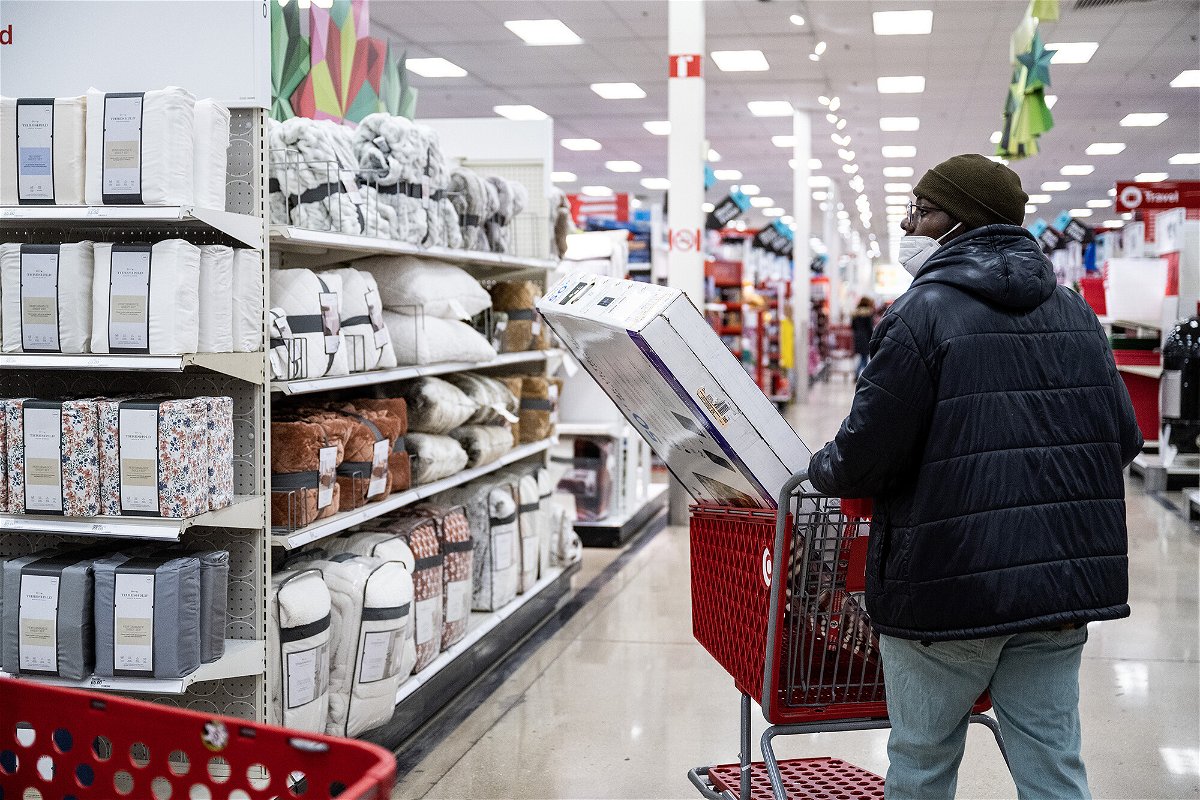US consumer confidence falls to lowest level since July

Consumers still don't feel great about their finances. A shopper is pictured at a Target store on Black Friday in Chicago
By Alicia Wallace, CNN Business
US consumer confidence fell in November as inflation and economic uncertainty continued to loom large and potentially dampen holiday shopping plans.
The Conference Board’s consumer confidence index measured 100.2 for the month, lower than the downwardly revised 102.2 in October. The index is at its lowest level since July, when it fell to 95.7 amid spiking gas prices and worsening inflation. A reading above 100 indicates an optimistic attitude toward the economy and higher propensity to spend.
Economists were expecting a reading of 100 for November, according to consensus estimates on Refinitiv.
It’s the second month in a row that the headline number has fallen, likely attributable to the recent upswing in gas prices, said Lynn Franco, the Conference Board’s senior director of economic indicators.
And consumers’ assessments of short-term economic conditions continue to turn gloomier. The Present Situation Index, which measures how consumers feel about the current business and labor market conditions, decreased to 137.4 from 138.7; and the Expectations Index fell to 75.4 from 77.9.
“Inflation expectations increased to their highest level since July, with both gas and food prices as the main culprits,” Franco said in a statement. “Intentions to purchase homes, automobiles, and big-ticket appliances all cooled. The combination of inflation and interest rate hikes will continue to pose challenges to confidence and economic growth into early 2023.”
As broader economic uncertainty grows, consumers appear to be approaching the key holiday shopping season with a “posture of prudence,” said J. Walker Smith, knowledge lead of Kantar’s global consulting division.
“People are pulling in and pulling back a little bit to try and reduce their exposure to the uncertainty ahead,” Smith told CNN Business in an interview. “But they’re not prepared yet to go into panic mode. There’s not a real sense of alarm among consumers right now.”
Consumer spending is a major driver of the economy, and the last two months of the year can account for about 20% of total retail sales and even more for some retailers, according to the National Retail Federation. The NRF projects that holiday sales could grow in the range of 6% to 8% to as high as $960.4 billion. In 2021, holiday sales were $889.3 billion.
The 2022 holiday shopping season kicked into gear this past weekend with consumers returning to stores to snap up bargains — and, in some places, even “doorbusters” were back in fashion.
But consumers are shopping amid stubbornly high inflation, which is hanging around like a ghost of the Great Inflation of the 1970s and ’80s.
However, given the strong labor market, shoppers are mostly in relatively stable financial condition, Smith said. Consumers have had savings and job security to help serve as a support, he added.
“If we had a combination of higher prices and higher unemployment at the same time, I think we’d be seeing a very different consumer than what we see right now,” he said.
While consumer confidence has fallen, it still remains relatively resilient; but it is unlikely to last, said Chris Rupkey, chief economist of FwdBonds LLC, in a note on Tuesday. Federal Reserve officials have said they intend to push interest rates higher over the next few months in the battle to bring down inflation and cool demand.
“At some point, the economy is going to break and that will take the wind out of the consumers’ sails in a hurry,” Rupkey said.
The current bout of inflation, which has slowly moderated in recent months but remains elevated at 7.7% in October, appears to be factoring into consumers’ holiday purchase decisions, Claire Tassin, Morning Consult’s retail and e-commerce analyst, told CNN chief business correspondent Christine Romans on Monday.
People are giving more gift cards and money in addition to apparel, specialty foods and other goods, she said. To make those purchases, she added, Americans are drawing down their savings and relying on credit cards.
“We’re seeing a lot of people leaning on savings and debt to afford a lot of these purchases,” Tassin said.
CNN’s Kevin France contributed to this report.
The-CNN-Wire
™ & © 2022 Cable News Network, Inc., a Warner Bros. Discovery Company. All rights reserved.